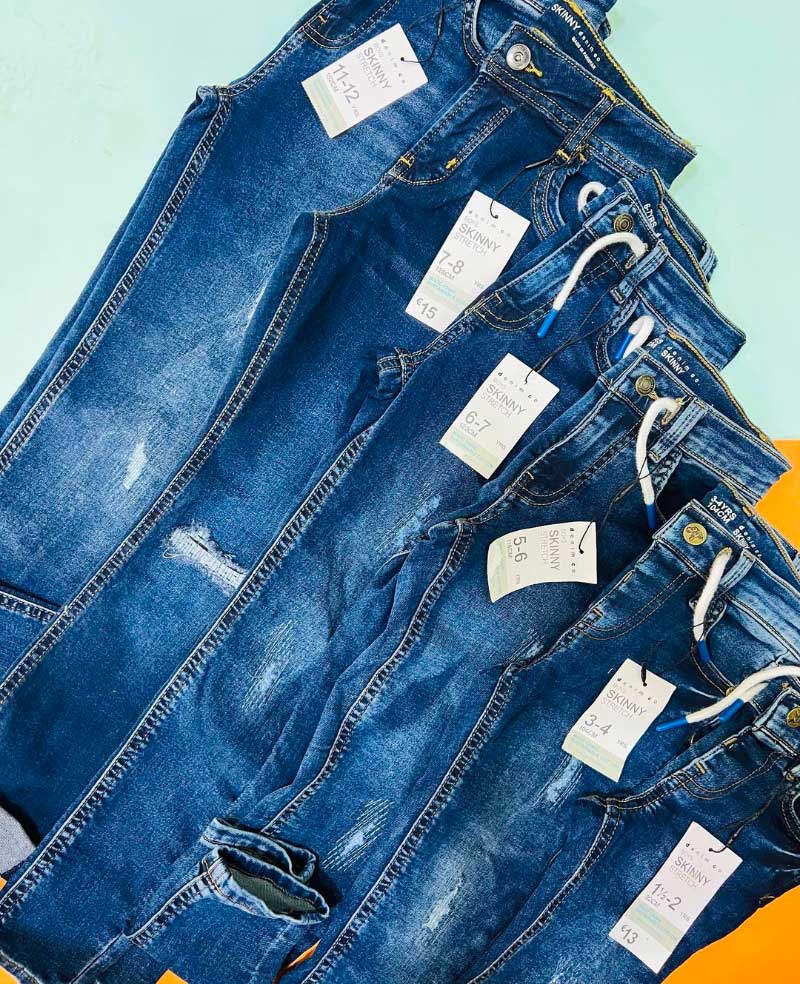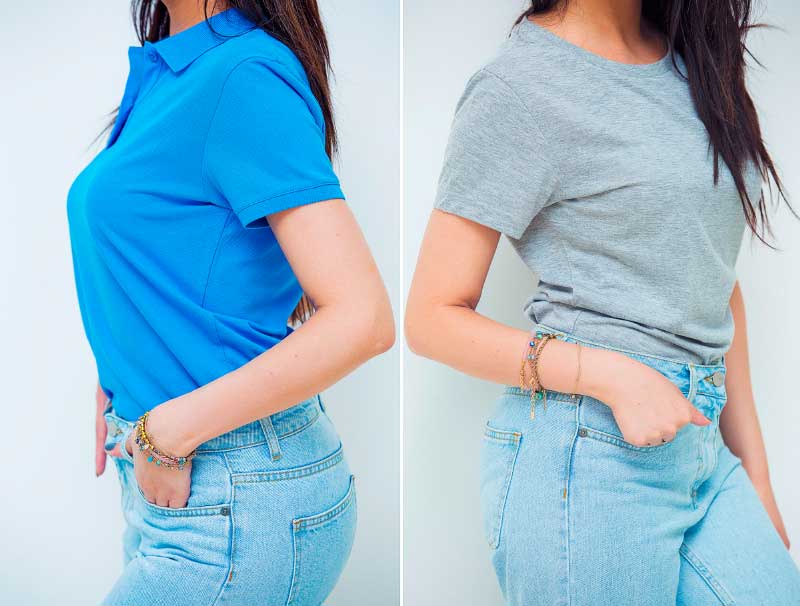
If you need a new tee or denim, you already know many aspects to consider before purchasing. Tight or loose, slim or oversized, each cut has its silhouette; even though it may seem like a lot of work, knowing the main distinctions between skinny fit vs. slim fit will help you choose pants that fit you precisely!
Clothes with a skinny fit are cut slim across the bust, waist, and hips and may use stretchy textiles to accentuate their form-hugging nature further. A slim fit is a looser, more comfortable alternative to a skinny fit, with a straight yet narrow cut. The skinny fit of jeans, trousers, shirts, and suits is typically more form-fitting than the slim fit.
Learn the difference between skinny and slim fit by reading this article. You’ll learn the main distinctions between these two types of pants. Additionally, you’ll soon learn helpful information for picking the right fit.
What Does “Skinny Fit” Mean?
Skinny fit is commonly used to refer to the slimmest, smallest cut of pants, shirt, or suit. Brand and style may lead to little differences, but “skinny” always refers to tight clothing. Compared to other cuts, the circumference of the armholes and legholes of skinny-cut garments tends to be smaller.
Skinny-fit clothing, such as jeans, typically has some elastic fibers woven into the fabric so that you may wear the snug cut comfortably. If it weren’t for the elastic, you wouldn’t be able to move because the style is so incredibly tight.
Skinny fit, with its form-hugging aesthetic, draws attention to particular physical characteristics. Skinny jeans elongate the legs and draw attention to their shape. Wearing a dress shirt with a slimmer cut will help draw attention to your shoulders and define your profile.
When Did Skintight Fashion Become So Popular?
Fashion trends in the 1980s largely accounted for the explosion in the popularity of sculpting and skintight clothing. Rock-era artists elevated thin jeans into a cultural icon, cementing their significance as a symbol of counterculture and social change.
The first stretch materials appeared in the 1980s, allowing for the creation of such garments. However, the first synthetic materials, polyester, and nylon were developed around World War II. It was in the 1980s that incorporating elastane or spandex into the fabric became popular, first in swimwear and later in other garments like skinny jeans.
What Exactly Is A Slim Fit?
Wearing clothes in a slim-fit design will make your figure look trim and toned. Unlike the restrictive skinny cut, this style allows for more freedom of movement. These garments are tailored to skim the body without clinging or elasticizing in the way that slim fits do.
Slim-fit dress pants, for instance, have tapered, little legs. However, the extra legroom and the lack of a waistband means you may move around more freely. They also tend to be less restrictive around the thigh area.
Nevertheless, the slim cut creates a more defined outline than the regular cut. Unlike a boxy, rectangular regular-fit button-down, a slim-fit shirt will have a more defined waist and shoulder area. The sleeves will usually be tapered, but the armholes will be generous, allowing you to raise your arms comfortably.
When Did It Become Famous?
Over the past few decades, slim-fit garments have repeatedly been on-and-off-trend for both sexes. Flapper costumes and slim, tailored suits were all the rage in the 1920s. Nonetheless, males wore high-waisted, pleated, baggy pants in the 1940s, while women wore several jackets with large, puffy shoulders.
Some types of clothes still favor the slimmer fit even now. For instance, most well-known suit manufacturers have at least some sizes in their thin cut. The slim fit is a modern and stylish cut for suits and dress shirts.
Wear skinny jeans if you’d like to look stylish in heels, jeans, and a silk top for a party. However, in the end, it’s up to you to determine if a skinny fit or slim fit is more flattering for you. Choosing a cut that works with your body shape is more important than following the latest trend.
Skinny vs. Slim Fit Jeans

- When comparing slim and skinny jeans, it’s also vital to remember that while skinny jeans are trendy, they can be challenging to move around in. On the other hand, slim-fit jeans are comfortable enough to wear while doing leg stretches without restricting movement.
- The wearer’s body is emphasized by the form-fitting nature of the skinny jeans. Conversely, the slim-fit jeans have slender legs that don’t droop or flare. This is the primary basis for choosing skinny jeans over slim-fit ones.
- Slim-fit jeans are a brilliant choice if you intend to keep moving. Skinny jeans are more flattering with high heels. This is an additional significant distinction between slim-fit and skinny-fit jeans.
- Most women prefer slim-fit jeans to skinny jeans because of the apparent style distinction between the two: skinny jeans are trending. In contrast, slim-fit jeans are more appropriate for a casual get-together or work environment.
Should You Get Skinny Jeans Or Slim Pants?
It all comes down to the label!
The more crucial factor is locating a brand of pants that sits comfortably on your body without being too snug or loose. A variety of slim and skinny cuts are available from most major retailers. Trying on multiple pairs of pants from different brands is the most excellent way to find the perfect pair.
Conclusion
Selecting the right fit for your body requires knowing your body shape, determining the style that looks best on that shape, and then combining that knowledge with your preferred types.
You can get a slender, form-fitting silhouette with a skinny or slim fit. It’s safe to assume that the most skinny version of any given brand’s offerings will be the snuggest and most elastic. The thin shape of a slim-fit garment is sometimes complemented by the even slimmer arm and leg openings.
Pants with a skinny fit are extremely form-fitting and have a straight ankle, while those with a slim fit have more room in the hips and thighs but end at the ankles. The terms “slim fit” and “thin fit” are used interchangeably to describe the narrowness of the shoulders and side seams of coats and shirts, respectively.
So now ask yourself if you’d rather wear clothes that fit slim or clothes that fit slender.



